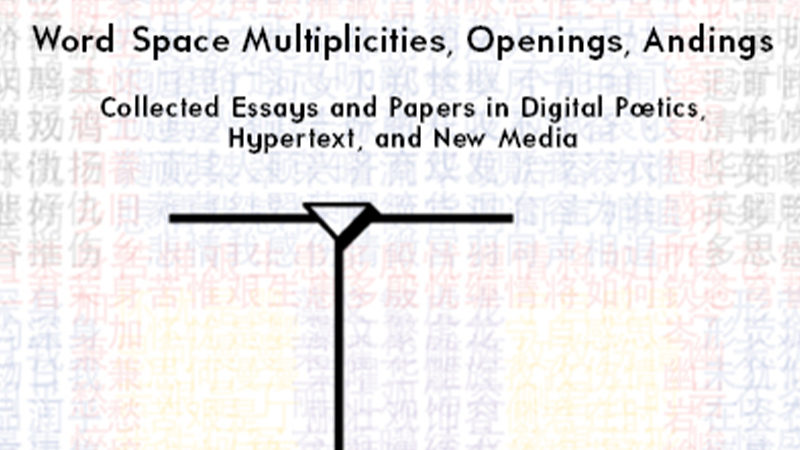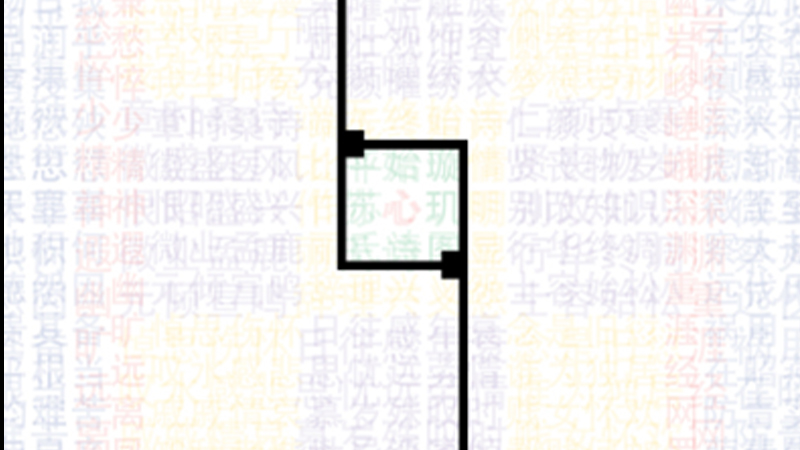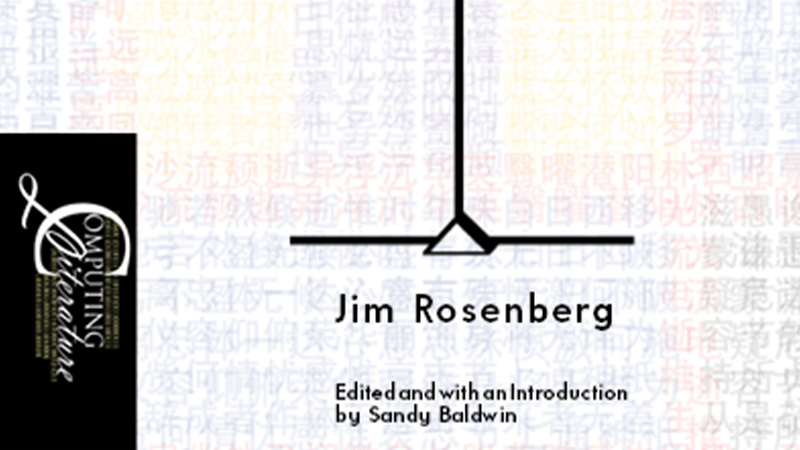Of Word Space Multiplicities, Openings, Andings Rosenberg writes, "The essays and papers in this book were only begun after what had become a lifelong quest was well underway. My earliest experiments in non-linear writing—which I came to call word-nets—were begun in the summer papers in this book were only begun after what has become of 1966. These may best be described as polylinear: interlocking linear phrases arcing across a large graphical space (mostly done on large pieces of watercolor paper). This form is not what I had originally thought to make. The original idea, which came to me in a flash, was to make a grid of words that could be read along any pathway of adjacency. (It was only several years later that I discovered that this exact form had been invented no less than a millennium and a half ago in China, as the celebrated Xuanji Tu, also known as The Revolving Chart, of Su Hui—more about which below. Over the years I have come to use Sui Hui’s amazing work as a kind of stick to hit myself over the head with at moments of being in danger of thinking myself entirely more clever than is warranted.) Having had this flash of an idea, my first thought was that it would not be until I reached the venerable age of 30 that I would have learned enough to be able to actually do this. But, later that summer I thought: 'I’m going to try!' And out came a word-net instead. A couple of years later came my first experiments with diagram poems. Little did I know then that the diagrams would come to be the core of my life’s work." -- Jim Rosenberg, "Preface"
1 COPY IN THE NEXT
Published by Computing Literature in Volume 5.
Sandy Baldwin gave the files for this copy to Dene Grigar in November 2021.
PUBLICATION TYPE
Scholarly Publication


